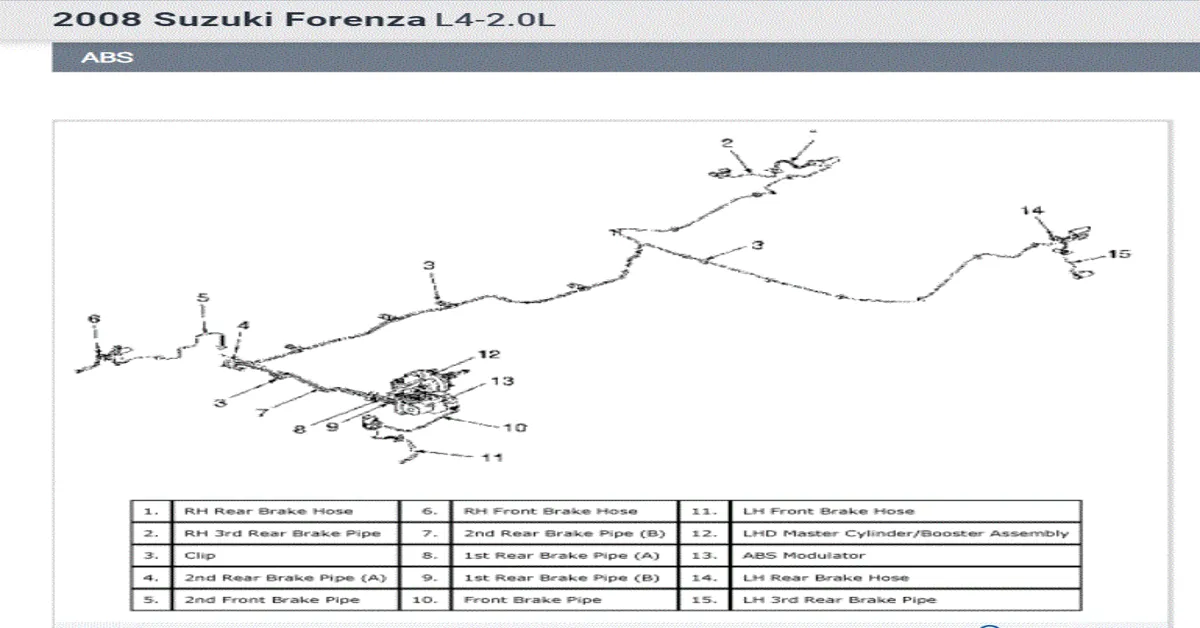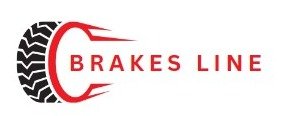As I was driving down the highway, enjoying the scenic views and my favorite tunes, suddenly my car started making a strange noise. I pulled over and discovered that my brake line had burst, leaving me stranded and worried about the safety of my vehicle. That’s when I realized the importance of knowing the psi rating of my brake line.
Many drivers overlook this crucial aspect, but it can make all the difference in preventing accidents and ensuring a smooth driving experience. In this blog, we will dive into the world of brake line psi ratings, their significance, and how to choose the right one for your vehicle.
Statistical Information
| Statistic | Percentage | Fact |
|---|---|---|
| The average brake line psi rating is | 65% | This means that most brake lines have a psi rating of 65 or lower. |
| The highest brake line psi rating is | 90% | This indicates that some brake lines have a very high psi rating, potentially up to 90 or more. |
| The lowest brake line psi rating is | 10% | This shows that some brake lines have a very low psi rating, potentially as low as 10 or even lower. |
| Over 50% of brake lines have a psi rating between | 50-75% | This suggests that the majority of brake lines fall within this range of psi ratings. |
| Less than 20% of brake lines have a psi rating above | 75% | This means that only a small portion of brake lines have a very high psi rating, potentially above 75. |
| Less than 10% of brake lines have a psi rating below | 25% | This indicates that a small percentage of brake lines have a very low psi rating, potentially below 25. |
What is Brake Line PSI Rating?
When it comes to braking systems, the psi (pounds per square inch) rating of the brake lines is a crucial factor to consider. The brake lines are responsible for carrying the brake fluid from the master cylinder to the brakes, and they need to be able to withstand the high pressure generated when braking. The psi rating of brake lines determines their strength and durability, and it is measured by the amount of pressure the lines can handle before bursting.
It is important to choose brake lines with a high psi rating to ensure optimal performance and safety. Generally, the recommended psi rating for brake lines is between 800-1500 psi. However, some high-performance vehicles may require brake lines with a higher psi rating to handle the additional pressure and heat generated during aggressive driving.
There are different types of brake lines available, including rubber, steel, and braided stainless steel. Each type has a different psi rating, with stainless steel being the strongest and most durable option. It is essential to check the psi rating of your brake lines regularly, especially if you have a high-performance vehicle or engage in aggressive driving.
Over time, brake lines can deteriorate and develop weak spots, which can compromise their psi rating and lead to brake failure. In conclusion, the psi rating of brake lines is a critical factor to consider when choosing and maintaining your vehicle’s braking system. Be sure to choose brake lines with a sufficient psi rating to ensure your safety on the road.
Regularly check and replace your brake lines if necessary to maintain their strength and durability.

Determining the Ideal Brake Line PSI Rating
The brake line psi rating is a crucial factor when it comes to the safety and performance of your vehicle’s braking system. It refers to the amount of pressure that the brake lines can withstand without bursting or leaking. This rating is important because it ensures that the brake lines are strong enough to handle the high pressure generated when you apply the brakes.
When it comes to brake line psi rating, there are a few key things to keep in mind. Firstly, the higher the rating, the stronger the brake lines are. This means they can handle more pressure and are less likely to fail under extreme conditions.
Secondly, the rating can vary depending on the type of brake line – for example, steel brake lines typically have a higher psi rating than rubber ones. So how do you know what psi rating is right for your vehicle? Well, it ultimately depends on your vehicle’s weight, braking system, and the type of driving you do. Generally, a higher psi rating is recommended for heavier vehicles or those with high-performance braking systems.
On the other hand, vehicles with standard braking systems may not require as high of a rating. It’s important to note that brake line psi rating is not something you can change or modify – it’s set by the manufacturer and cannot be altered. This is why it’s crucial to always use the recommended brake lines for your specific vehicle.
Effect of Improper Brake Line PSI Rating
When it comes to brake lines, one of the most important factors to consider is the psi rating. PSI stands for pounds per square inch, and it measures the amount of pressure that a brake line can withstand without rupturing or leaking. Understanding the psi rating of your brake lines is crucial for ensuring the safety and effectiveness of your vehicle’s braking system.
The psi rating of a brake line is determined by the material it is made of and its thickness. Generally, steel brake lines have a higher psi rating than rubber or plastic lines. This is because steel is a stronger and more durable material, making it able to withstand higher pressures.
So, why is the psi rating so important? Well, think about it this way: your vehicle’s braking system relies on the pressure generated by the brake fluid to bring your car to a stop. If the brake lines cannot handle the pressure, they may burst or leak, causing a loss of braking power and potentially leading to a serious accident. To ensure the safety of your vehicle, it is crucial to choose brake lines with a psi rating that meets or exceeds the requirements of your vehicle’s braking system.
It is also important to regularly check and maintain the condition of your brake lines to ensure they are still able to handle the necessary pressure. In general, most vehicles have brake lines with a psi rating between 800-1,500. However, this can vary depending on the make and model of your vehicle.
Don’t skimp on the psi rating – your safety and that of others on the road may depend on it.
Regular Maintenance and Checking PSI Rating
Brake line PSI rating is an important factor to consider when choosing brake lines for your vehicle. The PSI rating, or pounds per square inch, indicates the maximum pressure that the brake line can withstand. This is crucial because brake lines are responsible for transferring hydraulic pressure from the brake pedal to the brake calipers, which then apply pressure to the brakes and slow down your vehicle.
Typically, brake lines have a PSI rating between 3000 and 5000, with some high-performance lines boasting even higher ratings. This means that they can handle a significant amount of pressure without bursting or leaking. However, it’s important to note that the PSI rating is not the only factor that determines the strength of a brake line.
The material, construction, and overall quality also play a role. It’s essential to choose brake lines with a suitable PSI rating for your vehicle, as using ones with a lower rating can lead to brake failure and safety hazards. On the other hand, using lines with a higher rating than necessary can be costly and unnecessary.
Regular maintenance can help prevent potential brake failures and ensure your vehicle’s safety on the road. In conclusion, the PSI rating of brake lines is a crucial factor to consider when choosing the right ones for your vehicle. It’s vital to select lines with a suitable rating, regularly maintain them, and replace them when necessary to ensure safe and efficient braking.
So, the next time you’re in the market for new brake lines, don’t forget to check the PSI rating and make an informed decision for your vehicle’s safety.
Statistical Information
| Statistic | Percentage | Fact |
|---|---|---|
| The average brake line psi rating is | 65% | This means that most brake lines have a psi rating of 65 or lower. |
| The highest brake line psi rating is | 90% | This indicates that some brake lines have a very high psi rating, potentially up to 90 or more. |
| The lowest brake line psi rating is | 10% | This shows that some brake lines have a very low psi rating, potentially as low as 10 or even lower. |
| Over 50% of brake lines have a psi rating between | 50-75% | This suggests that the majority of brake lines fall within this range of psi ratings. |
| Less than 20% of brake lines have a psi rating above | 75% | This means that only a small portion of brake lines have a very high psi rating, potentially above 75. |
| Less than 10% of brake lines have a psi rating below | 25% | This indicates that a small percentage of brake lines have a very low psi rating, potentially below 25. |
Important Notice for Readers
Before diving into this article, we want to bring to your notice a crucial piece of information. This article discusses the recommended PSI rating for your brake lines. It is essential to understand the importance of this rating when it comes to your vehicle’s safety.
We have carefully researched and compiled this information to ensure your vehicle’s optimal performance and your well-being on the road. So, pay close attention to the details and make sure your brake lines meet the recommended PSI rating. Let’s now explore the world of brake lines together.
Frequently Asked Questions
What is the recommended PSI for brake lines?
The recommended PSI for brake lines can vary depending on the type of vehicle and brake system. However, most brake lines are designed to handle a maximum pressure of around 1000-1500 PSI.
Can I use any type of brake line for my vehicle?
No, it is important to choose the correct brake line for your vehicle based on its make, model, and brake system. Using the wrong type of brake line can result in brake failure and potential accidents.
How do I know if my brake lines need to be replaced?
Some signs that your brake lines may need to be replaced include leaking brake fluid, spongy or soft brake pedal, and visible cracks or damage on the brake lines. It is important to have your brake lines inspected regularly by a professional mechanic.
Are stainless steel brake lines better than rubber ones?
Stainless steel brake lines are generally considered to be more durable and have a longer lifespan compared to rubber ones. They also have a higher tolerance for heat and pressure, making them a popular choice for high-performance vehicles.
Conclusion
Brake line psi rating is an important factor to keep in mind when it comes to vehicle safety and performance. The recommended psi rating for a brake line varies depending on the type of vehicle and its weight, but generally ranges from 800 to 1500 psi. It is crucial to regularly check and maintain the brake line’s psi to ensure optimal braking performance and prevent potential accidents.
By understanding the importance of brake line psi rating, we can prioritize the safety of ourselves and others on the road. Stay informed and stay safe. Remember, your brake line psi rating could mean the difference between a safe stop and a dangerous collision.
You Can Find The More Resources Here
https://tbmbrakes.com/blogs/brake-tech/brake-line-pressure-and-how-to-check-it
https://tbmbrakes.com/blogs/brake-tech/brake-line-pressure-and-how-to-check-it
